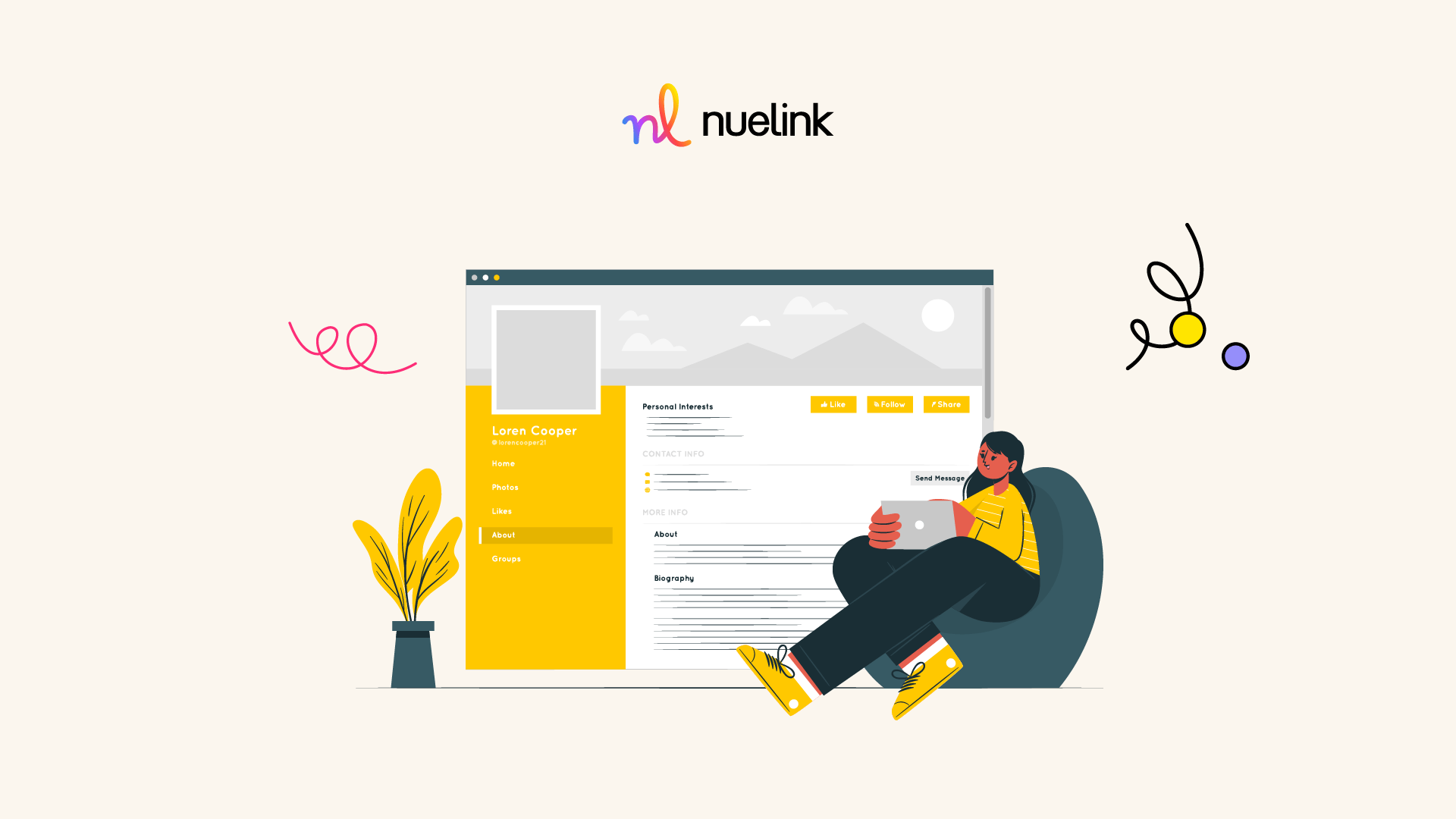Entrepreneurship has been around ever since man's existence, but in the 21st century, it has become a different ball game. Creating and managing various social media platforms has become necessary, especially after the last two years.
During the big C, many businesses, especially in-store businesses, were on the verge of bankruptcy. They were faced with a difficult decision, either join the tide or be left behind.
One of these businesses faced with this decision is Sticky. Sticky is a candy shop based in Sydney and has been around for 20 years. However, during the pandemic, sales were so low that the shop owner decided to take business advice from his teenage daughter.
Her solution was to start a TikTok account. They started uploading TikToks making fun designs with hard candy and even took special requests from their followers spread out across the globe. Now, business is booming, and they are boasting a combined 7.5 million followers on TikTok.
@stickyaustralia Replying to @astarfzwh76 don’t worry, we have had one for quite a while. #candy #lollies #food #art #capybara #satisfying #oddlysatisfying
♬ Feeling Free - Gun 247
This is not just the story of Sticky but the story of many businesses that were not afraid to make the jump to open themselves to new customers.
There is a misconception that online marketing is a job left to marketing experts whose fees add up. This misconception costs small businesses a lot of money in outsourcing their marketing team and lost revenue from customers just a click away. Sticky’s socials are managed by the father-daughter duo and that is why it is successful because they are authentic to their brand image.
Many small businesses are put off by the idea of managing different social media platforms and we do not blame them. Social media marketing is a lot of work but offers even greater rewards.
This is where our guide comes in. This is a step-by-step guide on social media marketing for small businesses and entrepreneurs. We simplify a complicated process with 8 easy-to-follow steps and provide you with the resources to facilitate the transition to social media marketing. This is what we will be covering:
Step 1: Set Attainable Goals that Align with Your Business Strategy.
Step 2: Understand Your Audience.
Step 3: Build a Multidimensional Online Persona.
Step 4: Create Content that Reflects Your Brand Image.
Step 5: Create a content calendar.
Step 6: Engage with your audience.
Step 7: Collaborate with other creators.
Step 8: Use the tools at your disposal.
Step 1: Set Attainable Goals that Align with Your Business Strategy.
Like any successful venture, setting goals and managing expectations is a great first step. You will be putting a few resources and a chunk of your time to create content and manage your brand’s socials, after all.

The goals you will set must align with the resources you will be able to set aside for this mission. Posting once a day is not like posting a couple of times a week, the algorithm recognizes your commitment and rewards you accordingly.
You must also consider your end goal and what you hope to gain. Social media marketing is not only great in terms of allowing you to reach a big customer pool, but it can also help manage customer service, increase brand awareness, generate leads, and engage customers.
If you manage a cafe or beauty salon, for example, having thousands or even millions of followers are not important when only a small fraction of your followers is able to access your services. You should not fall for vanity metrics and keep in mind that follower count is not as important as it seems to be at times. Ask yourself these questions:
How much time and resources am I willing to allocate to social media?
Who do I want to view my socials?
How do I want to be seen as a brand online?
How can I reach the right audience?
The answers to these questions determine how you will proceed moving forward.
Step 2: Understand Your Audience.
Understanding your audience is an important step and should be given a lot of thought. This step is crucial to your social media marketing strategy and will influence even the simple decision of which platform/platforms you should choose to promote your business.
There are many platforms out there but not all platforms are made equal to your set goals. Taking a step back and understanding who you are selling to can take some time. There are a few elements you may want to consider before you invest any time or effort into a social media marketing strategy.

If you are an in-store service provider or seller, you may want to start with location. Who is able to access your services?
Check out our guide on Google Business Profile for online marketing for businesses that offer in store services.
What is the age demographic of your customers?
What is their income?
What are their expectations?
The questions you pose depend on your business and the goals you have set during the first step. You have to take a hard look at your customer and determine your priorities. You may consider a quick survey at first to give you a clear idea of the path you want to follow next.
Let’s assume that you have an online clothing store that sells trendy clothes. Your demographic consists mainly of Gen Zers and you want to start posting content on social media to reach a new audience. You start by opening a Facebook account and posting pictures of your products. After months of posting, sales are still the same and you have gained no base following to speak of. The first and most crucial mistake you made here is that you did not understand your demographic.
Facebook is not the platform you want to use to market to your younger customers. As Forbes has stated, Gen Zers are simply not friending on Facebook. Most Gen Zers are exclusively on TikTok and Instagram and are dedicated to the short video format these two platforms have going on these days.
Posting TikToks and reels of try-on hauls using upbeat music is what works for this audience. Tailoring your content to your audience makes or breaks your success online.
If you are a B2B service, it is considered a social media marketing suicide to not have a LinkedIn account. LinkedIn is the first destination another business owner will head to. It is after all the hub for professionals to connect and sneak a quick look at their portfolios. It is a great platform to flaunt your professional accomplishments and target other businesses in need of your services.
These elements all depend on the primary work you have done to understand your audience and cater to their needs. Ask the right questions and you will hit gold; ask the wrong questions and you will find yourself talking to the wall.
Step 3: Build a Multidimensional Online Persona.
As we have mentioned before, authenticity is an essential component of your online persona. You should make your customers feel like they are interacting with friends and not the person they are buying this or that from.
Your goal is to increase revenue by sharing your product online, but your brand image should not reflect just that. Introduce yourself and your team and share with your audience your interests and background. Creating an emotional connection makes your audience more susceptible to opening their wallets.

Social media is a personality contest and putting yourself out there is essential, especially as a small business owner. Putting a face to the brand makes a big difference in endearing the brand to the customer and is why small businesses thrive online, even with big corporations competing for the same audience's attention.
You can further build this connection by filming behind the scenes of your product’s production process and how your office is run. This will add a personal touch to your online personal and endear you to your audience. Celebrate your accomplishments and those of your team online and let your audience get to know you.
It is also worth pointing out that while you are running a business, being business-like and formal on social media is not a good look. Social media is a laid-back form of marketing and your online persona should match that.
We are not asking you to crack jokes on your socials, but if you could please do, just do not take yourself too seriously. Your audience does not want to feel like they are interacting with a robot but are looking for a personal connection. Building an emotional connection is a sure way of not only generating leads and turning the leads into profit but also building a loyal customer base.
Another important aspect of your brand image which often goes unnoticed is your bio. Having an unfinished bio does not reflect well on your brand Image. Uploading your logo as a profile picture, filling out information about your brand and contact information, and making sure to include your website address go a long way in establishing yourself as a professional company.
As we will come to discuss later in the guide, consistency is key. This includes consistency in tone and aesthetics. Authenticity is a key factor a customer considers when deciding which brands to invest their money in.
Step 4: Create Content that Reflects Your Brand Image.
Joining social media can be overwhelming at first and you might feel like you are being pulled in a million directions with different trends emerging every day.
You must remember that your content should be crafted for your audience and therefore jumping on the bandwagon of emerging trends is not rewarding. Do not get me wrong, participate in trends but as long as they serve to further your band’s image and aesthetics.

As we have already established, posting consistently is a great way of appeasing the algorithm gods. When it comes to social media, at times quantity does triumph over quality, especially with TikTok and reels.
Trending on reels is especially easier nowadays since Instagram pushes the short video format over picture posts. Many companies create product-based social media posts, but these do not tend to attract customers. You can complement the usual “here is my product, go buy it” type of content with some informative and entertaining content.
Besides offering variety in content, by being informative you establish yourself as a figure of authority in the minds of your followers. It is also important that you offer easy-to-digest content that is sharable and allows you to connect with new audiences.
Another way you can post a lot of content online with zero to no work is by sharing posts of your customers showcasing your product or services. This will not only offer you much content to use, but your customers will feel seen and appreciated. Make sure to tag them in your posts and ask that you be tagged when they use your product or visit your establishment.
It goes without saying that wishing your audience happy holidays is crucial. Posting a picture of your office Christmas tree with a caption celebrating the holidays is a great way to start.
Celebrating personal accomplishments or celebrations, company’s anniversary, passing the 1 000 followers mark, your birthday… The list is endless. While we are on this topic, having a good caption game is important. A good caption is a great way to showcase your company’s image. Captions that incite a laugh always leave a mark on the customers and make a good first impression on them.
Making use of hashtags and emojis is an essential part of online marketing. Hashtags are critical to cutting through content clutter when you are looking for a specific thing on social media.
You can observe your competitors on the hashtags they use to get familiar with your industry hashtags. Using hashtags cuts down on the search that your potential customers will do to find your brand. We also suggest that you create a hashtag for your brand and encourage your customers to use your hashtag.
Step 5: Create a content calendar.

Creating content for your brand is the most important part of this process but we still have a few steps to follow. As I have mentioned a few times now, consistency is key to social media success. As with the rest of your business, social media marketing requires a bit of planning and finesse.
Sit down with your team once a week or once every other week and brainstorm ideas for future content. Coordinate any new releases you have with this calendar to allow you to promote your new products online.
You are releasing a new collection for fall, post a try-on haul on reels, you are adding something to your menu, have some of your customers taste test it, and film their reaction. Creating content does require a bit of time, so set time aside to allow you to film, edit, and post.
In addition, you have to commit fully to a posting hour. The hour you choose depends on a few elements. First, you can start by following the recommended posting time on these social media platforms.
Facebook:
- The best times to post: Mondays through Fridays at 3 a.m., Tuesdays at 10 a.m. and noon.
- The best days to post: Tuesdays through Fridays.
- The worst days to post: Saturdays.
Instagram:
- The best times to post: Mondays at 11 a.m., Tuesdays and Wednesdays from 10 a.m. to 1 p.m., and Thursdays and Fridays at 10 a.m. and 11 a.m.
- The best days to post: Tuesdays and Wednesdays.
- The worst days to post: Sundays.
TikTok:
- The best times to post: Tuesdays 2–3 p.m., and Wednesdays and Thursdays 1–3 p.m.
- The best days to post: Wednesdays and Thursdays.
- The worst days to post: Sundays.
Twitter:
- The best times to post: Mondays, Tuesdays, Wednesdays, Fridays, and Saturdays at 9 a.m.
- The best days to post: Tuesdays and Wednesdays.
- The worst days to post: Sundays.
LinkedIn:
- The best times to post: Tuesdays from 10 a.m. to noon.
- The best days to post: Wednesdays and Thursdays.
- The worst days to post: Saturdays and Sundays.
You can also look at your analytics to determine the ideal time to engage with your audience. This, however, will take some time and many posts to collect the necessary data to determine a suitable schedule. You can also observe your competitors and follow in their footsteps at first.
Of course, this level of planning is no easy feat and must be done for every platform you are on. This is when services like Nuelink come in. Nuelink, and other services on the market, help you plan, automate and manage your social media account.
Step 6: Engage with your audience.

As we have mentioned previously, engaging with your audience is an essential step in this process. This step can make or break your social media marketing strategy.
And, no one understood the assignment like Wendy’s. Wendy’s is an American fast food chain and its Twitter account is a marketing masterpiece. Before 2017, their Twitter account was the usual buy this, order that we came to expect from a brand social media account.
Pookie looking absolutely fire pic.twitter.com/zx9zjINi7m
— Wendy’s (@Wendys) January 30, 2024
They took a big risk spicing up their social media marketing strategy by having “beef” with their competition and customers alike, and their risk paid off in folds. Their new strategy was based on sass and most importantly engagement.
One would think that customers will be put off by being roasted on social media by a fast-food chain, but surprisingly they ate it up, both figuratively and literally. Customers loved having their attention and Wendy’s was rewarded for their efforts with a blooming business in a cut-throat industry. Beefing with people has earned Wendy’s a loyal following online that translated into sales.
Roasting your competition and customers is not a successful business strategy unless, of course, it is part of your brand’s image, but engaging your audience in any capacity on your socials is the way to go. Customers nowadays are used to quick responses and the traditional email is not cutting it anymore. They want to have your attention and they want to have it fast.
According to statistics, 74% of customers rely on social media to make their next purchasing decision. Answering an inquiry in the comment section or a DM is what will differentiate you from the competition.
Interacting directly with your audience on your socials, especially as a small business, might replace any other customer service work that you need to do. Customers are more inclined to DM a business than call them to complain about an issue that has occurred.
Creating content is a big part of social media marketing, but so is interacting with your audience. After posting, set aside time to respond to comments and interact with your customers. Hearing their feedback, the good, the bad, and the ugly helps with not only making the customer feel seen but it offers you some suggestions on ways to improve your business. In fact, seeking their advice in the form of Q&As on stories is a good strategy to follow as well.
Step 7: Collaborate with other creators.

While a lot of social media marketing is done on your own social media platforms, you should not restrict yourself to your small corner of the internet. Retaining your base following is no easy task but engaging more potential customers online needs a bit more work.
Taking a collaborative social media marketing strategy can help a new audience open their eyes, and eventually their wallets, to your brand. If you leverage this strategy correctly, you will generate many leads and sales. With more brands taking the social media marketing route nowadays, it is easier than ever to cross-promote.
We think it is a great idea to connect with your competition to cross-promote each other. Outrageous, I know, but hear us out first. If the type of service or product is not a one-time purchase, a car or a house for example, then why not join forces? This strategy has become a common occurrence nowadays, especially among fashion and beauty brands.
HM alone has collaborated with many other brands and designers such as Simone Rocha, Jimmy Choo, Lanvin, Versace, and many more. These collaborations are often very sought-after and sell quickly.
The reason for this is that the clothing items are promoted to two audiences at once. This new audience who possibly never heard of Lanvin or Simone Rocha is now aware of and possibly following these brands. As for HM, they can boast a collaboration with a luxury brand on their Instagram and provide their customers with affordable designer clothes. It is a win-win situation for everybody.
Another collaboration strategy is a profile takeover. A profile takeover is when a brand gives a content creator or influencer access to its social media platform. The influencers invite their audience to the brand’s page to interact with them and your brand is put in front of a new audience.
Usually, creators tend to host lives on a platform or multiple platforms at once and do a Q&A or other activities. It is important to choose the right creator to collaborate with on a profile takeover. The creator’s brand image must align with your brand image and they must be a recognizable face among your followers.
An influencer marketing strategy serves as a great way to make a touchdown with a new audience, especially since people are more inclined to follow an influencer’s advice than that of a celebrity. Influencers present themselves as relatable people, and that resonates with audiences. Having this relatability rub off on your brand is an added bonus to the exposure you are already gaining from this venture.
It is also important to take a local approach to your marketing strategy by sponsoring local creators. This strategy depends on your social media marketing budget. However, sponsoring local content creators does not break the bank and it still yields great results.
Social media marketing is a competitive business and some brands try to get the upper hand by placing ads on their content. This was once a great way to generate leads but not anymore. People have adapted to these new marketing techniques targeting them. Studies have shown that social media users started using add blocks to filter their feeds from any marketing efforts.
The other half that is left is possibly not even real people. Ad programs that most social media companies use cannot tell a real person from a bot account. Bot accounts are fake accounts and unfortunately cannot generate any sales.
Companies have caught up as well to the ever-changing landscape of social media marketing. Instead of investing their social media marketing strategy in buying ads, they are now investing it in influencer marketing.
As a small business, you can choose some local content creators to promote your products. Before making any move, make sure that they have a big enough following to generate sales and that their brand image aligns with yours. Analytics have shown that influencer sponsor content works since they have a loyal following that trusts their recommendations.
Step 8: Use the tools at your disposal.
This process can seem overwhelming and tiring but there are tools that you can use to cut down on the time you spend managing your business’s social media accounts. The tools we will share with you are either free or have a free version that will help you navigate social media marketing with as few resources allocated as possible. These tools are meant to facilitate the process from start to end.
Nuelink
@nuelink 📢 Exciting News! 🎉 🚀Introducing the all-in-one Nue Link in Bio by Nuelink! 🚀 🔗 Now you can easily connect and engage with your audience. New Link In Bio tool helps content creators, entrepreneurs, and professionals share their posts, products, and services.💡 ✨ Stand out with customizable Link in bio, eye-catching designs, and seamless integration across platforms. Create a stunning page that reflects your brand's unique identity.🎨 ⏰Manage all your links in one place, save time, and track performance to optimize marketing strategies.📲 With Nue Link in Bio, you can easily update, track, and analyze your links' performance in one place. 💼 💥 Join the Link in Bio community today and unlock endless possibilities for growth and success! 👉 Click the link in our bio to learn more and get started with Link in Bio. 💻✨ #SocialMediaToo2024 #SocialMediaManagementTool #SocialMediaMarketingTool #linkinbio🚨
♬ original sound - Gingernurse47
We will start this list with one of the best tools in the market and that does most of the work for you. Nuelink helps you plan, automate and manage your social media accounts. It gives you access to a ready-to-use content Library and your posts are organized into collections for easy access.
You can also automate your content, schedule it at your convenience for maximum exposure, and access your analytics to assess growth. You can use Nuelink to post on all major platforms all at once. Nuelink has a free plan with all of the features included to use on three platforms of your choice indefinitely.
Hashtag Expert
Unlike the last two tools, Hashtag Expert serves one specific purpose, to generate suitable hashtags for your content. It uses an intelligent algorithm to match trending hashtags to your content. Both the app and the website are free to use and can be used as soon as you register.
Trello
Trello is a great tool to organize your team in general. This tool will help you collaborate with your team on your social media content from filming until posting. This app is also free to use and is available as an app as well.
Canva
Canva is a design app that provides unlimited templates, graphs, and photos, and it is a simple app to use and free on top of that. It comes in the clutch when you have to create beautiful graphs fast.
Excel
I am sure you are familiar with this tool but if it is not broken then don't fix it. We mainly recommended Excel to help you stay organized. You can use one of the calendar templates available to schedule content from start to finish.
As we have promised, we laid out 8 steps to ease your journey of social media marketing as a small business.
The first step we covered was concerned with setting realistic goals for your social media marketing strategy. These goals are based on the time, money, and effort you are willing to invest in your social media platforms, and how your social media marketing goals align with your business goals. Determining these goals takes time and a bit of pondering.
We then moved to the second step which was concerned with understanding your audience. This step is integral to your online success and a major factor to consider in all of your decisions. Understanding your audience is not only an important social media strategy but also an essential business move in general.
In the third step of this guide, we covered the aspects concerned with building a social media persona. As we have stressed multiple times throughout the guide, authenticity is the key to online success. Being a small business comes with a lot of disadvantages, but one major advantage is that potential customers are more likely to make a purchase from you after you establish a connection.
The fourth step was concerned with creating content that both aligns with your audience's interests and reflects your brand’s image. As we have established in this section and other sections, consistency is the foundation of social media marketing. Your content can help you establish yourself as a figure of authority and trust in the minds of your audience.
In the fifth step, we talked about the importance of a social media calendar. Creating a social media calendar is meant to hold you accountable for this marketing strategy and keep you organized. We also talked about the perfect time to post on different platforms.
We moved to the importance of engaging with your audience in the sixth step. The back and forth between customer and business is one major element that set social media marketing apart from other forms of marketing. Interacting with customers makes them feel seen by you and appreciated for the business they bring.
In the seventh step, we dealt with the world of influencer marketing and the importance of collaborations. The internet is a big space and limiting yourself to your corner of it is doing your business a disservice and this is where collaborations come in.
In the last step, we highlighted the different tools that can help you with your social media marketing. We talked about social media management tools, like Nuelink, and other useful tools like Excel, Trello, and Canva.
These steps are not the be-all and end-all of social media marketing. The industry is ever evolving and with that, we have to keep changing as well. Finding social media success is no easy task but as a business, there is nothing more rewarding. As we have seen in the last 2 years, only businesses that are willing to take the risk and join the tide will survive and thrive.







